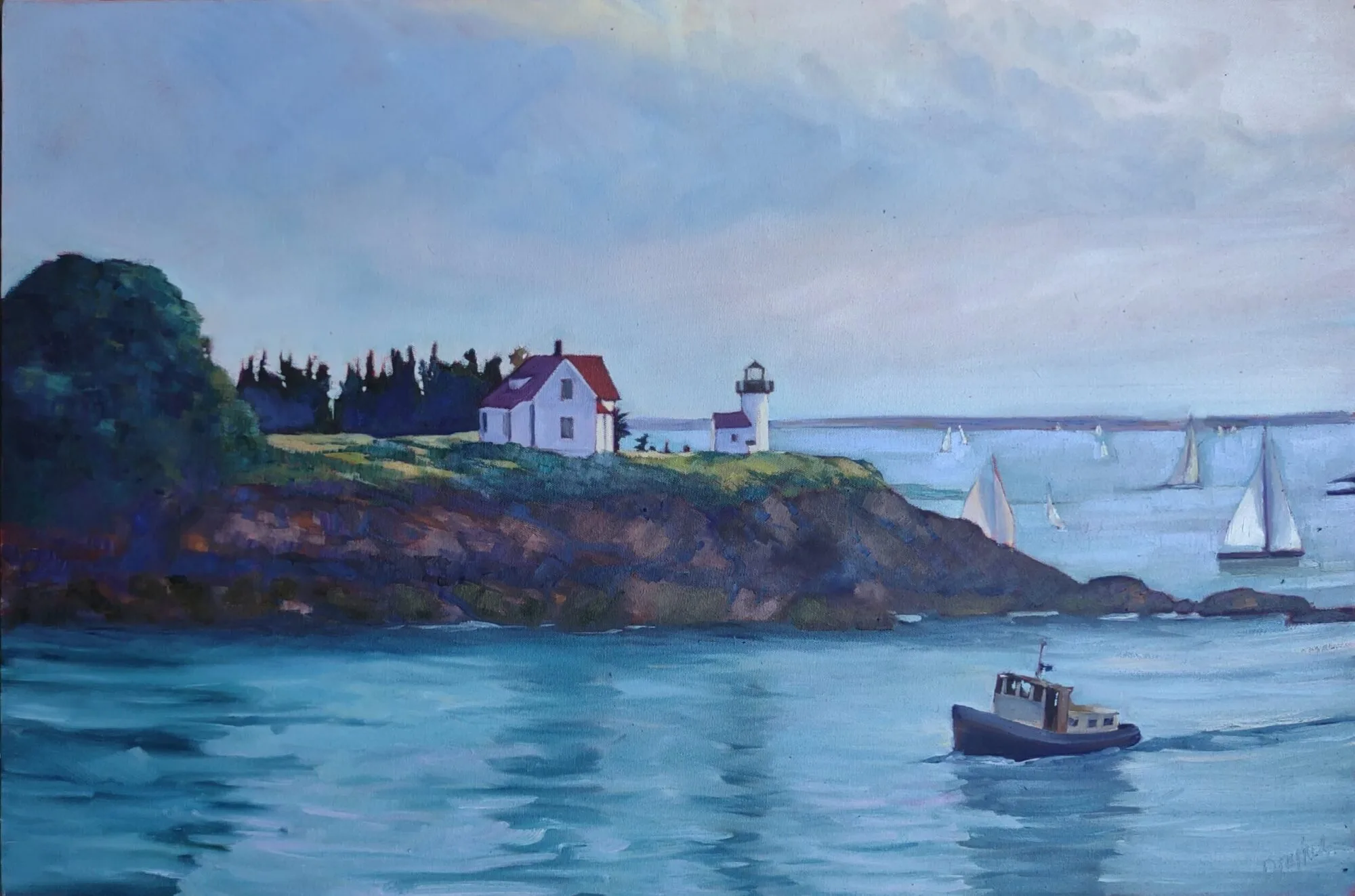Halloween in my youth was mysterious and moody, dangerous and exciting. But adults can take the fun out of anything.
 |
| Tête-à-tête, by Carol L. Douglas, 12X16, oil on Russian birch, sold. |
I’m from Buffalo. It never gets bitterly cold or oppressively hot there; it just snows a lot. Buffalo-Niagara is a USDA Zone 6 region, more or less the same as the Mason-Dixon Line. It’s kept temperate by the Great Lakes. Today I live very close to the ocean in Maine. We have the same weather pattern—warm in autumn, cold in spring.
Growing up, we made our own Halloween costumes. Our repertory was extremely limited: we were tramps (sorry), ghosts, cowboys, Indians (sorry), or witches. This wasn’t by design but by necessity. Unless one of us had a daft and indulgent mother, we had to scrounge the makings from scraps and hand-me-downs.
 |
| The Last of Autumn, by Carol L. Douglas, oil on linen, 11X14. |
We started thinking about this in mid-October, when the Northeast is wrapped in the balmy warmth of Indian Summer. “Season of mists and mellow fruitfulness, Close bosom-friend of the maturing sun,” John Keatscalled it, and nobody ever said it better. Sweater weather is idyllic and it seems like it will last forever.
That was dangerous for Halloween planning. We would get fanciful about what we could pull off. Our grandmother’s old nightgown, a dance leotard; any of them could be called into service. But diaphanous doesn’t work when the temperature drops. When Halloween night actually arrived, we would inevitably be bundled up in winter coats, shivering in a howling wind laden with sharp pellets of snow and dried leaves. With rare exceptions, November 1 is the death knell of warm weather in the Northeast.
 |
| Thicket, by Carol L. Douglas, oil on Russian birch, 10X10 |
This year, I’m not bothering to buy Halloween candy (although my friend Sue suggests stockpiling it ‘just in case’). Although Halloween is a huge deal in the United States, Trick-or-Treating is on its way out. It’s been replaced by Trunk-or-Treat, where kids go around a parking lot getting candy from nice safe adults. COVID-19 will be the nail in the coffin for the older tradition. But it doesn’t matter; adults had already ruined it when they started buying elaborate costumes for their kids. All the fun was in the imagination and the preparation, and now that’s lost.
My siblings and I knew everyone in our neighborhood, but Halloween was still mysterious and moody, dangerous and exciting. Our mischief ran as far as lobbing a roll of toilet paper over Aunt La’s house, only to see it get stuck in the branches in her front yard. We talked about soaping windows, but none of us ever did it.
 |
| Goat shed, by Carol L. Douglas, oil on linen, 9X12. |
One of my best memories as a kid was building a fort with my friend Beth. We were quite young; we had nothing more than sticks, grass and moss. We were blissfully absorbed for days. No adult shagged us back out of the woods so they could watch us; no adult offered to help with power tools. Today both Beth and I are ‘makers’. I’m sure that being allowed to waste lots of time in unsupervised play contributed to that.
My friend Marjean recently sent me this story about a man who built a pirate’s cove in his backyard. Whoever it was for, it wasn’t for children—or for the likes of me. Where is the opportunity to imagine? It’s all laid out for the visitor, in much too great detail. Adults—with their overscheduling, planning, helping, and monitoring—can take all the fun out of anything.




